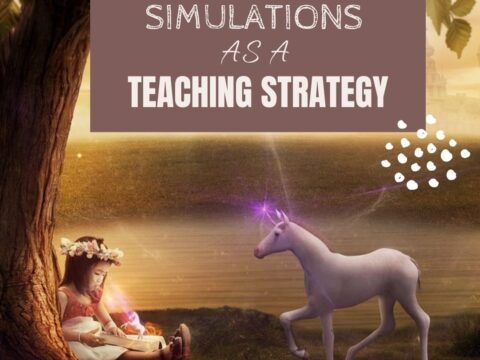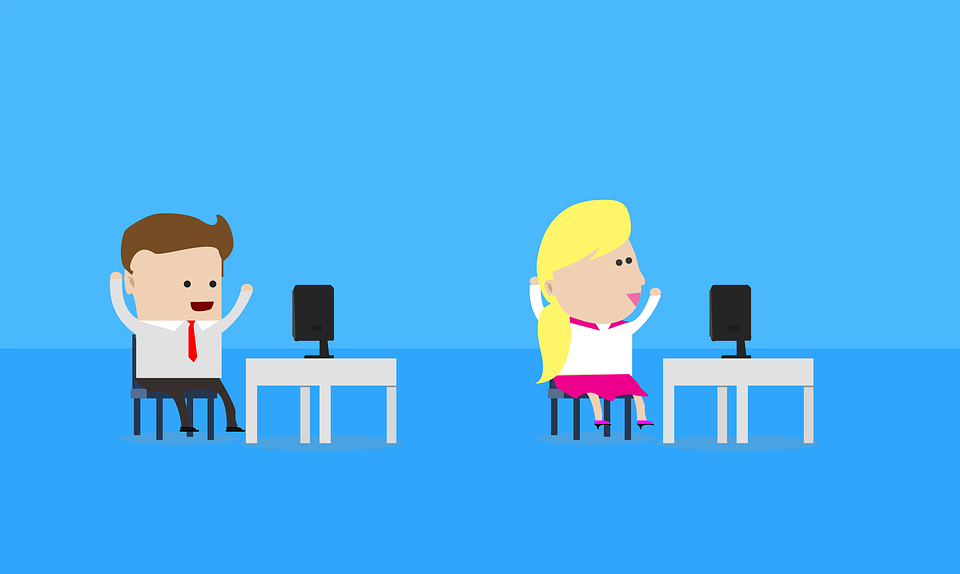 The hottest topic in my elementary school tech classroom is Minecraft–and has been for several years. So I was thrilled when efriend, Josh Ward, offered to write an article for Ask a Tech Teacher connecting Minecraft and the most important topic in my classroom–Digital Citizenship.
The hottest topic in my elementary school tech classroom is Minecraft–and has been for several years. So I was thrilled when efriend, Josh Ward, offered to write an article for Ask a Tech Teacher connecting Minecraft and the most important topic in my classroom–Digital Citizenship.
Josh is the Director of Sales and Marketing for green hosting provider, A Small Orange. He is originally from Southeast Texas, but has called Austin home for almost 20 years. He enjoys writing about his passion for all things Internet related as well as sharing his expertise in the web hosting industry and education.
I think you’ll enjoy this article:
Teaching Digital Citizenship with Minecraft
A “digital citizen” is generally defined as “those who use the Internet regularly and effectively.” With children and teenagers moving more and more toward the Internet and away from television for their recreational and informational needs (95% of all teens from ages 12 to 17 are online, and 80% of those use social media regularly), the next generation of digital citizens isn’t just arriving, they’re already here.
Advertisers and corporations have known this for some time, and have begun targeting the youth demographic that will drive the country’s economic future, making responsible and informed “digital citizenship” that much more important.
The Internet has come to play a huge part in not only our daily lives, but our educational future, and these formative years are a perfect time to stress the importance of a free and open Internet, as well as developing a strong sense of civic identity, cooperation, and participation.
Building Worlds Together
Games like Minecraft can actually be a valuable tool in building digital citizenship. Unlike many traditional games, Minecraft places a strong focus on creativity, resource management, and cooperation.
Minecraft’s basic gameplay is deceptively simple — the player exists in a large, open-ended world, gathering natural resources to survive in a world populated by hostile creatures. To survive, a player must chop wood, mine stone, build shelters, acquire food, and build weapons to survive, using only the materials found in the game world itself. The game has often been compared to LEGO building blocks, only digital (and thus functionally infinite).
Beyond this simple concept, however, lies a deeper level of gameplay. Once a player masters the basics of survival, the potential of an open-ended game world reveals itself. A player can build anything he or she can conceive, from buildings and gardens to elaborate architectural and engineering marvels. Industrious Minecraft players have done everything from recreating fictional or historical buildings to building working virtual machines.
Minecraft can teach not only logic, problem-solving, and resource management, but also the value of cooperation, coordination, and leadership. Many Minecraft players, including students, set up Minecraft servers in which many players can cooperate on a single goal.
Servers and Sharing
Setting up one’s own Minecraft server can be a project in itself. Since Minecraft runs on Java, anyone desiring to set up their own server must at least know how to install and run both the server software and the game client.
Setting up a server from scratch requires some basic networking knowledge, such as IP addresses, ports, and rudimentary network configuration. While there are extensive step-by-step tutorials on setting up one’s own server, there are also many hosting companies that offer server “rentals,” taking care of the heavy lifting of server setup and allowing users to get started playing right away.
Once the server is set up, the administrator may invite several players to join, who can all play together in the same persistent game world. A game server is a single machine, running a single instance of a Minecraft “world,” which can then be accessed via an IP address. There are already thousands of Minecraft servers on the Internet; some open to the public, others restricted to a few chosen members. The administrator of any server decides not only who can participate, but must manage membership and play style — an open server, for example, is subject to vandalism by random players, who may discover the server and alter, damage, or even destroy the creations built by other players.
Minecraft also features other types of gameplay — for example, “Adventure” servers, where players may have to cooperate to solve puzzles and achieve a single goal. The base game also includes a “Creative” mode, which removes the need to harvest resources or survive against monsters, freeing players up to build whatever their imagination can conceive.
A Minecraft server can easily become a thriving microcosm of a real community. For large construction projects to be successful, resources must be coordinated and shared, and if the server is in “survival” mode (where monsters appear after sundown to attack players), time management, shelter, and defense become important skills.
For example, a Minecraft “village” might feature a farm of domesticated animals, which must be herded, fed, and protected. Trees, an important source of wood, must be replanted using saplings, lest virtual deforestation occur and wood become scarce. Rare ores and minerals can be stored in chests for use by the group — and the larger the project, the greater the need for organization and leadership.
The educational possibilities for a game like Minecraft are manifold — not only can the game teach skills like resource management, cooperation, and leadership, but it also touches on ecological themes (such as deforestation and mining). If students should set up their own Minecraft servers, kids and teens can learn more about hosting and basic computer networking. While deceptively simple on the surface, Minecraft can be a valuable tool in teaching digital citizenship to students.
Josh Ward is the Director of Sales and Marketing for green hosting provider, A Small Orange. Their vision is simple: perfecting hosting while maintaining a homegrown feel with a focus on people – customers, employees, and the community. Josh is originally from Southeast Texas, but has called Austin home for almost 20 years. He enjoys writing about his passion for all things Internet related as well as sharing his expertise in the web hosting industry and education.
Attribution for Minecraft image: This photo, The Village in Minecraft” is copyright (c) 2011 by post-apocalyptic research institute and made available under an Attribution-ShareAlike 3.0 license.
Jacqui Murray has been teaching K-18 technology for 30 years. She is the editor/author of over a hundred tech ed resources including a K-12 technology curriculum, K-8 keyboard curriculum, K-8 Digital Citizenship curriculum. She is an adjunct professor in tech ed, Master Teacher, webmaster for four blogs, an Amazon Vine Voice, CSTA presentation reviewer, freelance journalist on tech ed topics, contributor to NEA Today, and author of the tech thrillers, To Hunt a Sub and Twenty-four Days. You can find her resources at Structured Learning.





































1 thought on “Teach Digital Citizenship with … Minecraft”
Comments are closed.